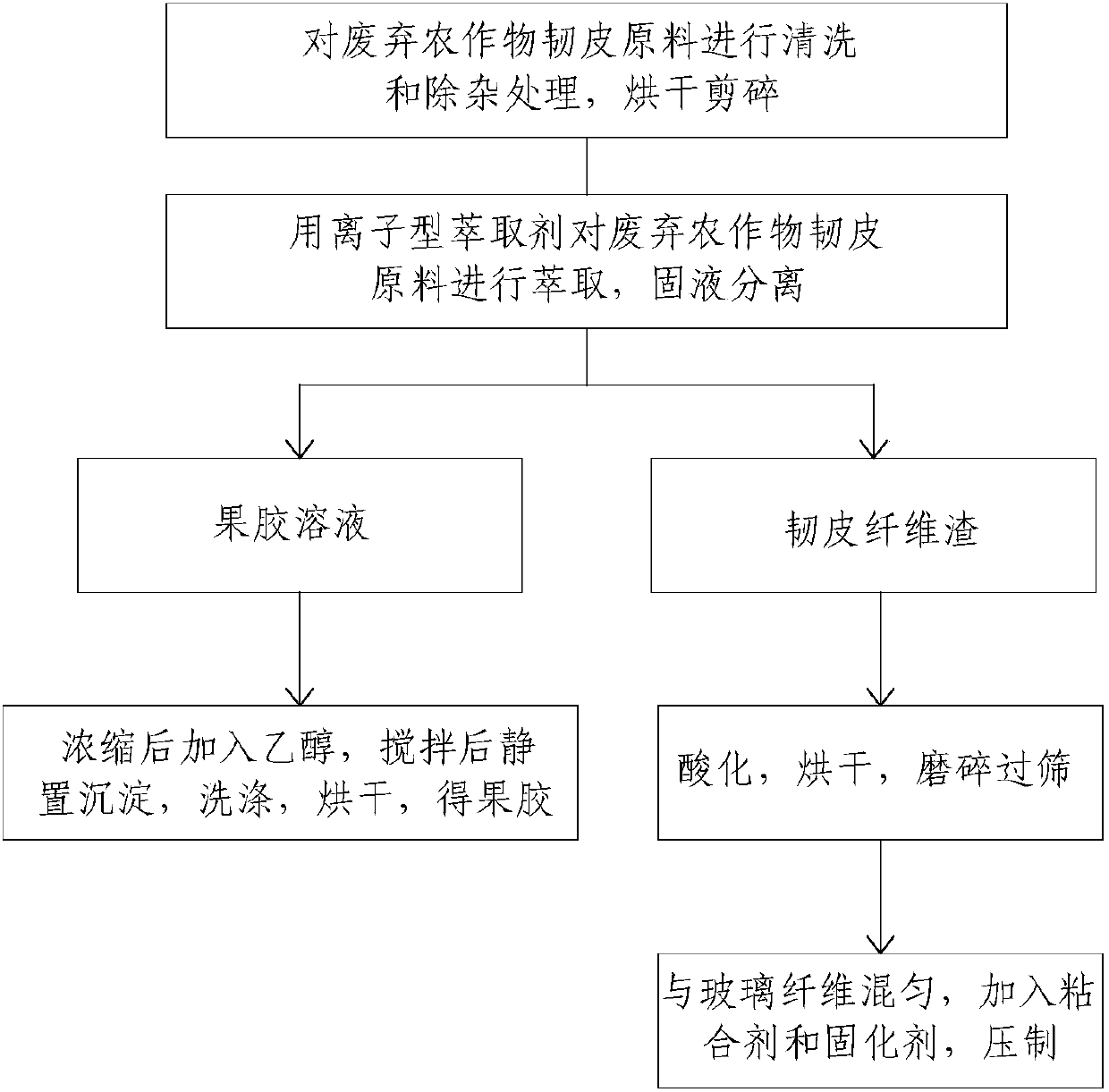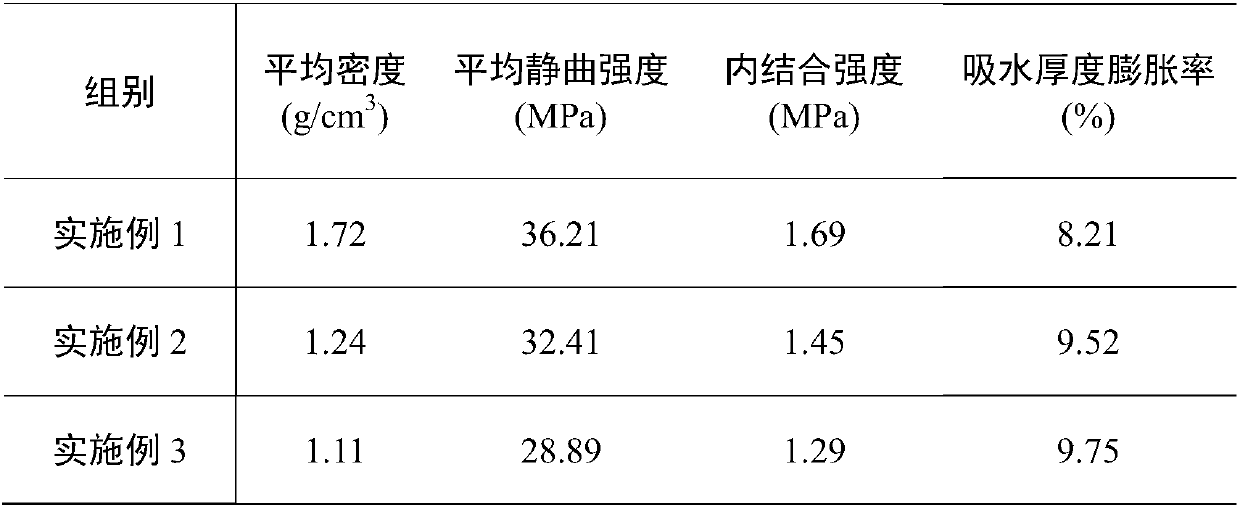Waste crop bast raw material resource utilization method
A crop and resource utilization technology, which is applied in the field of resource utilization of waste crops, can solve problems such as extraction and preparation of fiberboard resource utilization methods that have not been seen yet, and achieve the effects of mild conditions, reduced production costs, and strong gelation
- Summary
- Abstract
- Description
- Claims
- Application Information
AI Technical Summary
Problems solved by technology
Method used
Image
Examples
Embodiment 1
[0028] Embodiment 1 A kind of resource utilization method of waste industrial hemp seed hemp bast raw material
[0029] The bast raw material of industrial hemp seed hemp collected from Hunan Yuanjiang Experimental Base was dedusted and sanded by blasting, and then dried at 50°C until the moisture content was <5%; 2cm section, soaked in 0.5% ammonium oxalate solution (W / V) for 30min according to the bath ratio of 1:5, boiled for 2h, stirred once every 30min, then centrifuged at 4000r / min for 20min, collected separately Pectin solution and industrial hemp seed hemp bast fiber slag; adopt rotary evaporator to carry out low-temperature concentration to pectin solution, obtain the pectin concentrate that concentration is 0.2g / L, then add absolute ethanol in the pectin concentrate, Control the concentration of ethanol at 97%-98%, let it stand for 2.5 hours until the ramie pectin is fully precipitated, then wash the precipitate twice with 3 times the volume of 65% ethanol solution, ...
Embodiment 2
[0030] Embodiment 2 A kind of resource utilization method of discarded linseed hemp bast raw material
[0031] The linseed hemp bast raw material collected from the base of Heilongjiang Academy of Agricultural Sciences was dedusted and sanded by blasting, and then dried at 50°C until the moisture content was less than 5%. Get 10kg of linseed hemp bast raw material, chop into 2cm segments. Soak the raw material fragments of bast seed bast and 0.45% ammonium oxalate solution at a bath ratio (W / V) of 1:3, boil for 2 hours, stir once every 30 minutes, and then use an industrial centrifuge to centrifuge at 3500r / min for 20 minutes. Collect the pectin solution and linseed bast fiber residue; use a rotary evaporator to concentrate the pectin solution at low temperature to make the pectin content about 0.25g / L, add absolute ethanol to the pectin concentrate to make the ethanol concentration reach 98 %, let it stand for 3 hours, until the seed pectin is fully precipitated; then wash t...
Embodiment 3
[0032] Embodiment 3 A kind of resource utilization method of discarded banana stalk bast raw material
[0033]The bast raw material of banana stems collected from the planting base in Zhanjiang, Guangdong is dedusted and sanded by air blowing method, and then dried at 50°C until the water content is <3.5%; 10kg of bast raw materials of banana stems are taken, chopped into 2cm sections , soak in 0.48% ammonium oxalate solution (W / V) for 40 minutes according to the bath ratio of 1:4, boil for 2.5 hours, stir once every 30 minutes, and then use an industrial centrifuge to centrifuge at a speed of 3000r / min for 20 minutes. Collect the pectin solution and the bast fiber slag of banana stalks respectively; use a rotary evaporator to concentrate the pectin solution at low temperature to obtain a pectin concentrate with a concentration of 0.2g / L, and then add absolute ethanol to the pectin concentrate , make the concentration of ethanol reach 98%, leave standstill 2h, until banana sta...
PUM
| Property | Measurement | Unit |
|---|---|---|
| concentration | aaaaa | aaaaa |
Abstract
Description
Claims
Application Information
 Login to View More
Login to View More - R&D
- Intellectual Property
- Life Sciences
- Materials
- Tech Scout
- Unparalleled Data Quality
- Higher Quality Content
- 60% Fewer Hallucinations
Browse by: Latest US Patents, China's latest patents, Technical Efficacy Thesaurus, Application Domain, Technology Topic, Popular Technical Reports.
© 2025 PatSnap. All rights reserved.Legal|Privacy policy|Modern Slavery Act Transparency Statement|Sitemap|About US| Contact US: help@patsnap.com


